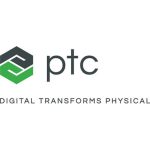Reporting of Quality System Regulation Series Sponsored by
Supplier and purchasing controls are an area where manufacturers have very limited control. In relying on external partners, manufacturers do not have the same day-to-day exposure and control as they do with in-house processes.
Speaking at a recent Medical Device Summit Quality System Regulation webinar, Steve C de Baca, Senior Vice President (Global Quality and Regulatory) for Beckman Coulter Diagnostics said that a high degree of risk identification and management throughout the supply chain establishes a company as world-class.
What is Purchasing Control?
When a need is identified and material, supplies, services, or capital are requested, this request should be reviewed before creating a purchase order. For a purchase order to be established and approved, authorization limits, a buy folder, a purchase order release, and supplier acknowledgement should be created and reviewed. The purchase order should then be monitored until the purchase is complete and the records should be adequately maintained and stored. This process not only helps ensure regulatory compliance, but also improves business efficiency.
Quality Management System
Purchasing has a place in the quality management system as a customer-oriented process. It is driven by meeting the needs of the customer through a service or component of a finished product.
Purchasing Controls Process Interactions
A supplier should be evaluated and selected based upon purchasing controls process inputs such as the resource management process, customer and regulatory requirements, and established requirements for purchasing. Once a supplier has been selected, purchasing information such as quality and delivery expectations needs to be communicated to that supplier, the purchased product needs to be inspected, and the supplier performance needs to be monitored. The goal of this process is to ensure that the purchased product conforms to the input requirements. There’s a tendency to think that the purchasing process pertains only to components of a finished product. However, manufacturers and distributors often purchase finished products from suppliers and purchasing controls apply to these products as well.
Supplier Quality Management Maturity Model
Quality organizations move through five levels of maturity as they strive for world-class supplier quality management. Supplier quality management often begins at a basic level with procurement-led activity and ad hoc programs, but at world-class companies it eventually integrates with other assurance activities related to corporate risks.
Supplier Relationship Management
Effective relationship management relies most heavily on open lines of communication. Cost and service improvements are the responsibility of both the supplier and the manufacturer. Suppliers should be provided with profit-making opportunities including collaboration and incentives that support their growth where possible. Senior management must keep their promises and own the outcome of new initiatives with suppliers. These elements will help ensure a superior relationship between manufacturer and supplier and allow both companies to grow collaboratively.
Risk Management
Effective segmentation of the supply base using spend and criticality attributes can provide reliable insight on which risk management strategies to roll out across different groups of suppliers. Quality and procurement should prioritize supplier risk collaboratively. Both groups should agree on a single risk prioritization framework. A weighted risk index can objectively guide risk management decisions. Generally, a risk and spend management index should assess supplier capabilities, minimize audit spending, reduce audit and qualification time, and eliminate unqualified current and potential suppliers.
For more information and to register for upcoming events in Medical Device Summit’s Quality System Regulation Webinar Series, click here. Next webinar on April 11, 2014 covers Corrective and Preventive Action.






